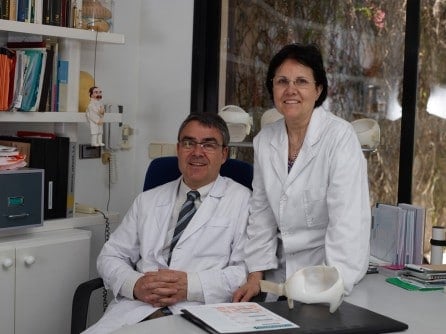- Six months of day surgery in a pediatric center
Objective. To evaluate the experience in day surgery in a pediatric hospital. Material and methods. Prospective study during the period from February to July 1995.
- Study of craniosynostosis by computed tomography.
Objectives To highlight the usefulness of multidetector computed tomography (MDCT) in the study of craniosynostosis.Material and methodsA total of 19 patients were studied from September 2007 to January 2011, using multidetector computed tomography (MDCT, General Electric Healthcare, Milwaukee, WI, USA).
- [Boix Ochoa's antireflux procedure returns patients to normal: 24-hour esophageal pH monitoring in 21 cases].
There is great controversy about the surgical treatment of gastroesophageal reflux (GER). It is well known that the Nissen procedure produces hypercorrection of gastroesophageal competition and often a "gas bloating syndrome". In contrast, the Boix Ochoa technique is more physiologic but corrects GER by allowing the persistence of a "radiologic" reflux. The objective of the study was to demonstrate the accuracy of this procedure.
- [Actimicosis costal]
We report an unusual case of costal actynomycosis observed several months after surgery for acute appendicitis in an 11-year-old boy. Surgical removal of the affected rib segment with lincomycin was necessary to obtain cure. Laboratory data are consistent with the aforementioned diagnosis.
- "Transient synovitis of the hip joint. Report on 104 hospitalized cases."
Introduction. Transient synovitis of the hip joint is a common and well-described condition. A review of cases requiring hospital admission is presented. Method. The clinical history of all patients admitted to our institution for treatment of hip joint synovitis between May 1988 and September 1991 was taken.
- One in four children with untreated plagiocephaly suffers severe language problems by age 3 years
Plagiocephaly is a type of cranial deformity that occurs between the third trimester of pregnancy and the first trimester of the baby's life, and consists of a flattening of the back of the baby's head, accompanied by a more or less severe displacement of the deformed half of the skull forward, causing not only alterations in head shape but also in function.
The causes are mechanical factors of continuous or excessive pressure in the posterior area of the head. If detected early (ideally around 3-4 months of age), plagiocephaly can be corrected with cranial orthopedics (the use of dynamic orthopedic bands) and neck physiotherapy, if there is accompanying torticollis.
- Neonatal surgery in the Catalan counties
Neonatal surgery depends on the pediatric surgical services and its presence is essential in every neonatal center of the most specialized pediatric hospitals. In any case, in the secondary centers it is necessary that the mediating personnel be trained in the instrumental surgical practices such as catheterizations, diagnostic and therapeutic punctures, etc., and above all be accustomed to the usual surgical pathology that is presented to them in order to send them correctly oriented and prepared to a higher center where the appropriate surgical treatment will be carried out.
- What is plagiocephaly?
We distinguish craniofacial deformities - those mechanical alterations of the previously well-formed skull and/or face - from craniofacial malformations - those anomalies due to intrinsic conformational phenomena of the bones, joints and soft parts of the face and skull.


